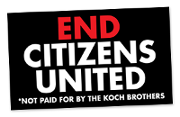Biblio
Filters: First Letter Of Title is I [Clear All Filters]
(2013). An Introduction to the Psychodynamics of Workplace Bullying.
252. Abstract
"For a scapegoat to become a victim, the group dynamics have to change. There needs to be a trigger, for example, an increase in anxiety levels due to a takeover or a restructuring of the organisation. If group members become more concerned about self-survival than about the group, the dynamics fragment. With little, or no, support from colleagues, an already burdened scapegoat would be vulnerable to attacks by group members who cope by projecting their anxieties on to others."
(2008). Innovate Like Edison: The Five-Step System for Breakthrough Business Success.
"The most innovative contemporary workplaces welcome humor and play and the most bureaucratic ones invariably take themselves too seriously. Overseriousness is a warning sign of mediocrity and bureaucratic thinking." (p. 124)
(2005). International management: cross-cultural dimensions.
"Middle management often feels threatened by lower level autonomy." (p. 132)
(2005). Innovation at the Speed of Laughter: 8 Secrets to World Class Idea Generation.
"Unfortunately some individuals who are full of wonderful and innovative ideas may be viewed as sullen, non-participating appendages, disconnected or, worse yet, lazy. Perhaps the real truth is that they are being asked to create ideas (already an emotional risk) in a way that is not suited for their style or comfort with focus. A drastic example of this sort of misclassification is Albert Einstein, who was labelled by many as lazy and arrogant by traditional academic standards of the time because he preferred a process of discovery and innovation that was isolated and introspective."
(2005). An introduction to group work practice.
"The scapegoat, for example, receives much negative attention and criticism from the group because the member is blamed for a host of defects and problems. According to Schulman (1999), members attack the portion of a scapegoat's behavior that they least like about themselves." (p. 235)
(2005). The Idiot.
(2003). I Am Never Lonely: A brief history of employee personality testing.
"This first boom in personality testing reached its apogee with Henry C. Link's Employment Psychology, in 1919, in which he proclaimed:
'The ideal employment method is undoubtedly an immense machine which would receive applicants of all kinds at one end, automatically sort, interview, and record them, and finally turn them out at the other end nicely labeled with the job which they are to do.'
(2003). I Don't Know What I Want, but I Know It's Not This : A Step-by-Step Guide to Finding Gratifying Work.
"Being bored or plateaued does not mean that you aren't working hard or that you don't have enough work to do. Being busy and dealing with the excessive stimulation that the workplace provides us with today have little to do with being bored. The combination of the two merely leads to a greater level of burnout." (p. 123)
(2003). In Praise of the Purple Cow.
(2001). Inside Servlets.
(2001). Introduction to Logic.
(2000). Imagine : what America could be in the 21st century : visions of a better future from leading American thinkers.
"People want it all. They feel, quite understandably, that is is their birthright. They want the fast life of converging technology, global roaming, rising opportunities, adrenaline-pumping challenges, and life at Web speed—and they want to spend time with their families and friends, meditate, keep fit, relax, and play. It's not about work/life balance; it's about the complete integration of work and life, a holistic, seamless fit between these two and every other aspect of life. The new-story leader encourages employees to engage their creative juices while they are walking along a beach, or to shop for groceries online while they are at work and not be self-conscious—indeed, to be unaware of the difference. Life is whole, not seperated into two solitudes called 'work' and 'life'. " (p. 129)
(2000). Internet Open Trading Protocol.
(1999). If work makes people with mental illness sick, what do unemployment, poverty, and social isolation cause?.
Psychiatric Rehabilitation Journal. 23(2), Abstract
"In fact, the change from the role of patient or client to a new role as worker in society is fragile at best. The journey to employment requires a more sensitive approach from all involved individuals (the worker, the professionals, family, and friends) to the extent that everyone can successfully leverage the potential and ability of the worker with an appreciation of the limitations that are part of the illness."
(1998). Images of Organization: The Executive Edition.
"The groupthink phenomenon has been reproduced in thousands of decision-making situations in organizations of all kinds. It may seem overly dramatic to describe the phenomenon as reflecting a kind of psychic prison. Many people would prefer to describe it through the culture metaphor, seeing the pathologies described in all the above examples as the product of particular cultural beliefs and norms. But there is great merit in recognizing the prison-like qualities of culture." (p. 186)
(1998). Is It Too Late to Run Away and Join the Circus?: Finding the Life You Really Want.
"'I get myself up in the morning. I shave my face. I dress in my clothes. I go to my office. I do my work. I come back to my house. But I feel like I'm only doing an imitation of myself, and it's not a terrific impersonation.'"
(1998). Its a Job Not a Jail: How to Break Your Shackles When You Cant Afford to Quit.
"What hurt me most was believing that my problem was caused by rotten bosses instead of by a stubborn me. Had I not been so bullheaded, I might have realized that although I would have preferred bosses that left me alone, what I really thirsted for was respect, fulfillment, and the opportunity to do work of which I could be proud." (p. 28)
(1997). Incestuous Workplace: Stress and Distress in the Organizational Family.
"'The last act of a dying organization is a thicker rule book.' The need for rules to control staff members marks a dramatic change in mutual respect, loyalty, and the esprit de corps that characterized earlier stages of organizational life." (p. 72)
(1997). Industrial Strength Java.
(1996). Inside the As/400.
(C)2014 CC-BY-NC 3.0, workcreatively.org











 ]
]